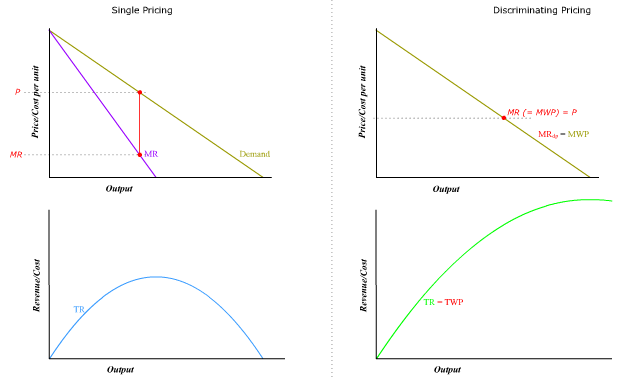Perfect price discriminators are sellers facing a downward-sloping curve whose products are unique enough to allow the sellers to charge the highest possible price that each unit can command. In other words, a perfect price discriminator must be a monopolist. But a monopolist need not be a perfect price discriminator either because it is against regulation or because it is too expensive to find out each buyer's reservation price1. Perfect price discrimination results in continuously rising total revenue (TWP) until price goes down to zero. On the other hand, total revenue (TR) of single-pricing sellers assumes an inverted U shape. We can call the perfect price discriminator's TR the total willingness to pay (TWP) and the buyer's reservation price the marginal willingness to pay (MWP). See the following diagram (see also Profit vs Efficiency Maximization).

Because each unit is sold at its maximum reservation price, P = MR. The demand curve is thus identical to MR.
Thus, when the perfect price discriminator maximizes profit at MR = MC, P = MC. In other words, efficiency (economic surplus2) is also maximized because the seller will sell or produce as long as the price the buyer is willing to pay is at least equal to the marginal cost of doing so. But because each buyer is charged his reservation price, all the economic surplus goes to the price discriminator (see Profit vs Efficiency Maximization).
- The highest price a buyer is willing to pay rather than doing without.
- Economic surplus is the difference between the reservation price (highest price one is willing to pay) and the marginal cost of a good. Total economic surplus is the sum of total consumer surplus and total economic profit.
